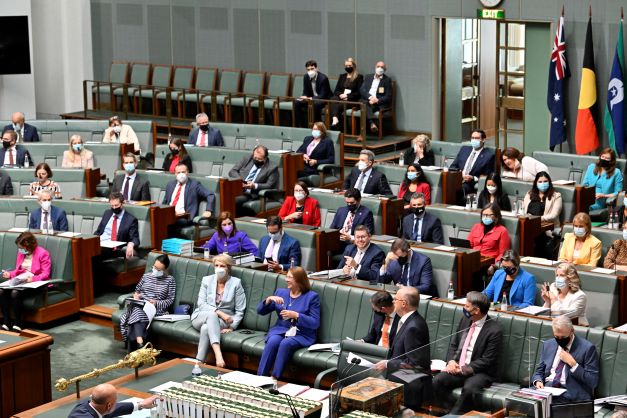What is the role of the Prime Minister in allowing a free vote on an issue debated in the Parliament?
The Prime Minister can decide to give their party members a free vote – sometimes called a conscience vote. This means party members can vote according to their own beliefs and the wishes of their electorate rather than with their party. Free votes have mostly been used to decide issues such as euthanasia, stem cell research or same-sex marriage.
The leaders of other parties can also give their members a free vote. However, it is more common for each parliamentary party to decide if its members are allowed a free vote. Before the issue is debated in Parliament, the Prime Minister and other party leaders usually say how they will personally vote.
The government side of the House of Representatives

Penny Bradfield/DPS AUSPIC
Description
The leader of the government is the Prime Minister, who stands and speaks at the main table in the House of Representatives. Members of the government sit in the 5 rows behind the Prime Minister. The government is the party or coalition of parties with the support of the majority of members of the House.
Permission should be sought from DPS AUSPIC for third-party or commercial uses of this image. To contact DPS AUSPIC email: auspic@aph.gov.au or phone: 02 6277 3342.